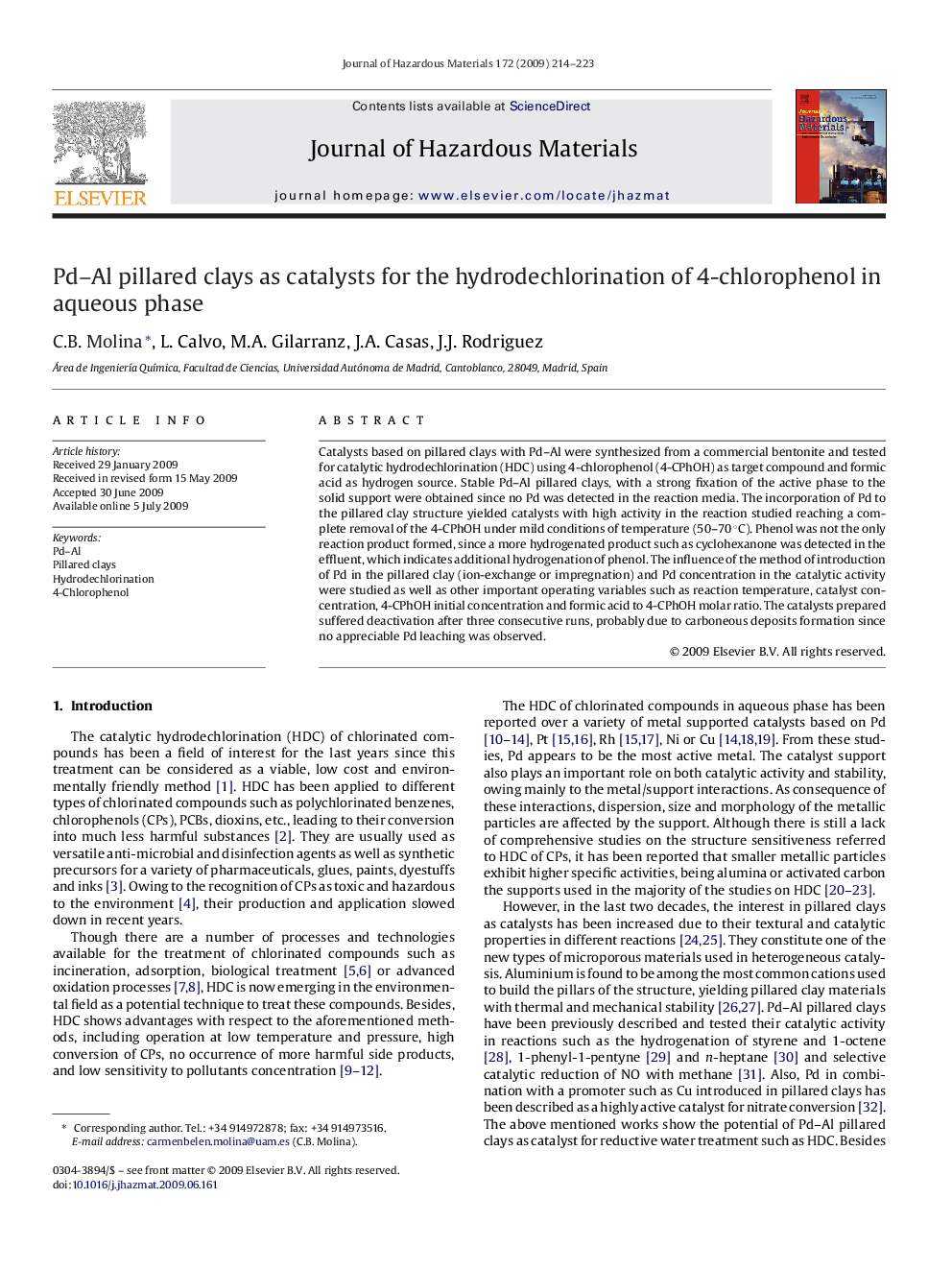| Article ID | Journal | Published Year | Pages | File Type |
|---|---|---|---|---|
| 581055 | Journal of Hazardous Materials | 2009 | 10 Pages |
Abstract
Catalysts based on pillared clays with Pd-Al were synthesized from a commercial bentonite and tested for catalytic hydrodechlorination (HDC) using 4-chlorophenol (4-CPhOH) as target compound and formic acid as hydrogen source. Stable Pd-Al pillared clays, with a strong fixation of the active phase to the solid support were obtained since no Pd was detected in the reaction media. The incorporation of Pd to the pillared clay structure yielded catalysts with high activity in the reaction studied reaching a complete removal of the 4-CPhOH under mild conditions of temperature (50-70 °C). Phenol was not the only reaction product formed, since a more hydrogenated product such as cyclohexanone was detected in the effluent, which indicates additional hydrogenation of phenol. The influence of the method of introduction of Pd in the pillared clay (ion-exchange or impregnation) and Pd concentration in the catalytic activity were studied as well as other important operating variables such as reaction temperature, catalyst concentration, 4-CPhOH initial concentration and formic acid to 4-CPhOH molar ratio. The catalysts prepared suffered deactivation after three consecutive runs, probably due to carboneous deposits formation since no appreciable Pd leaching was observed.
Related Topics
Physical Sciences and Engineering
Chemical Engineering
Chemical Health and Safety
Authors
C.B. Molina, L. Calvo, M.A. Gilarranz, J.A. Casas, J.J. Rodriguez,
